Wizards of the Coast Gen Con Interview – Part 1 of 2 (D&D Boardgames)
As I mentioned in the previous article, I interviewed “Dungeons and Dragons” designers Mike Mearls and Rodney Thompson at Gen Con this year. The following interview was regarding the new D&D Board game line that is being launched. Castle Ravenloft is in stores this week, and I had a chance to check it out early.
D&D Boardgames
Stuart Greenwell (SG): Can you tell me about the inspiration and target market for the new line of D&D Boardgames?
Mike Mearls (MM): We had a two-pronged approach for the boardgames. First, if you already play the D&D RPG, it is very easy to pick up. It has attack bonuses, attack mechanics, armor class, movement and monsters that are all similar to the D&D RPG. While it is a DM-less adventure, it is still a dungeon crawl. So, it has that D&D feel that you can experience if you don’t have a DM or enough players for the RPG.
Secondly, if someone doesn’t have experience with the D&D RPG, but are into board games like Descent or other dungeon crawlers, they will feel comfortable with this game and it will introduces them to D&D.
It is important to remember that this is not an RPG, and thus concessions had to be made to make the best board game we could make. But, we wanted to maintain the D&D feel with the mechanics. So basically, it is an extension of D&D if you are already a player or a gateway to D&D if you are unfamiliar.
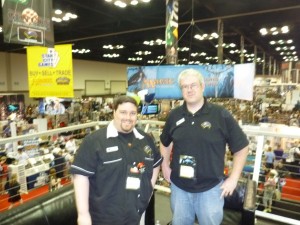
SG: Please describe the gameplay style, number of players, etc?
MM: The games are co-op boardgames supporting up to 5 players. You can also play them game solo. It comes with 12 adventures (scenarios). 2 of the 12 adventures are for solo play.
SG: How long is the typical game?
MM: The typical game lasts about an hour and a half for the first scenario. And less time once you are familiar with the rules.
Rodney Thompson (RT): Myself and some of the WOTC crew took the train from Seattle to Gen Con and we played this game en route. As Mike said, the first game took about an hour and a half. Subsequent games were 45 minutes to an hour. After you play once, the time drops down significantly.
SG: Can you go into more detail on how this game differs from the RPG? You mentioned that concessions were made. Is it 4E D&D stripped down?
MM: Yes, that is a good way to look at it. A good example is hit points (HP). Characters start within the range of 6 to 10 HP. Most monsters have 1 or 2 HP; while boss monsters have around 5 HP. This speeds the game up considerably compared to the RPG. There can be a constant stream of monsters coming onto the board and they will drop out very quickly. This also helps to give the game a sense of dread, foreboding, and tension.
There are also powers in the game similar to 4E, but simplified. If you are playing a fighter you can choose from your fighter power cards. There is no math, it is all calculated in. It is sort of like making a character, but instead of going through the book to pick out what you want, you pick two cards from the fighter deck of card. (e.g., one daily and one at-will).
It has the same feel as 4E, but it only focuses the games attention onto whatever rules that are needed to function as a boardgame. The numbers on the boardgame cards won’t match up to the 4E rules, but it has the same kind of info (e.g., an attack, damage, and an effect).
Also, Blast and burst attacks target a specific tile instead of a pattern with placement rules.
Hopefully, if you are new to D&D you can understand the transition from tiles to squares to bursts, etc.
SG: Do you consider this a gateway drug to full on D&D
MM: Yes. The same way that the Red box is to get RPGers involved with D&D, this can get board gamers involved.
SG: Can you talk a little about the design process of the board game. What did you do different for the board game compared to what you would do on the RPG? Is there the same types of testing/R&D areas?
MM: The process was more cyclical than normal. The board game idea emerged last summer with the thought of “wouldn’t it be cool to play D&D without a DM”. What would that look like?
These games are very component driven. In the board game you can assume that the players have all the components that are in the box. When you look at a lot of the board games that are out now, the components are one of the big selling points. This game has miniatures, a nice board, tokens, great art, and that tactile feel that board gamers generally like. So that element really drove the design a lot more than it would in an RPG book. For the board game we wanted the components and the rules to really come together in a nice tight package.
Coming up for the idea for the dungeon tiles, a board game where you build the board as you go, that has been done before, but it hasn’t been done with D&D. If you think back to some of the boardgames TSR had done (like Dragon Quest), you put the board down and it shows the entire dungeon. That doesn’t feel like D&D. Part of the fun with D&D is not knowing what is around the next corner. So we wanted to emphasis that in the design.
The adventures drive the exception based mechanics. The monsters have tactics on the cards that tell players how to active them. That would be hard to do in the RPG as situations can be vastly different. For the boardgame, they know people have the monster card and the scenarios that are written. Overall, the components help simplify the gameplay.
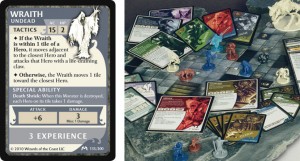
SG: Can you give an overview of how the game plays?
MM: A player takes his turn, like D&D you can move and attack or double move and explore. You start building the dungeon out as you explore. As monsters show up, the player that spawned the monster is responsible for tracking it. So the player would take their turn, expand the dungeon, add more monsters, then that player activates the monsters and traps in his hand. So, the DMs role is shared among the players. When the monster is defeated, the card is discarded.
SG: Do the tiles, monsters, and end-goal all changes with the different scenarios?
MM: Some things change, but not all of it. Basic rules, of course, stay the same. But the scenarios change the critical story points in the game. For example, there is one scenario where you have to go recover the Icon of Ravenloft from the dungeon. The game follows the standard rules until you find the icon, then a huge horde of monsters show up on the board and you have to survive long enough to recover the icon. Usually, a scenario focuses on a couple of exceptions, but not too many to make it overwhelming. There is another adventure where as you go into the dungeon as the sun is setting. You want to complete this scenario before the sun goes down. The game gets harder as the time goes on. So, that is something extra that you track that is unique to that scenario. For the most part there is one major rules addition to each scenario.
SG: WOTC has Avalon Hill in their portfolio. Did you have any interaction with them for this product? Or was this complete in-house with the D&D group?
MM: This was all in-house. The Avalon Hill designs, I believe, are mostly freelanced. There are some in-house designers, like Rich Baker who works on Axis and Allies, who is also a D&D designer. When we play-tested the board games, we tried to get a lot of people looking at them. It is important for them to get an array of experience from expert board gamers, to people who have never played D&D before. We wanted to try to get a good range of input for the game.
SG: Ravenloft is coming out this month. Wrath of Ashardalon is in November. A big thing with boardgames are expansions. What is the future of this line? Will there be Ravenloft expansions? Or, if you get additional boardgames, do they play together?
MM: Wrath of Ashardalon is its own separate game that uses the same core system. The adventures and encounter decks have new content to tweak the experience. Boardgaming is new territory for the Wizards of the Coast D&D group, so we are starting with complete games. Retailers are not happy when a core game goes out of print and they have a bunch of expansions on the shelves. We will see what the fan reaction is. If they like it, what do the want out of it, etc. We will publish adventures through the website. If you look at the encounter cards, they each have unique names. So new adventures can list out what to put in the encounter deck, which can mix across the different games. Same thing with the monsters. Overall, we will keep an open mind and see where it goes from here.
SG: For clarification, if you set Wrath of Ashardalon down next to Ravenloft, they will have the same basic components just different kinds of tiles, monsters, powers, etc?
MM: Yep. And the rules are exactly the same, with the same rules changes happening in the adventures.
——–
Notes about the game: Castle Ravenloft is out on August 17th. It includes 41 plastic unpainted miniatures, 13 sheets worth of dungeon tiles to create the board and cardboard tokens, 200 cards (encounter, monsters, powers, and treasure), and a d20.
One interesting note on the miniatures. Though they are single color plastic (though there are several different colors for different types), the molds were reused from the former D&D Miniatures line.
Rules for the boardgame are a free download from the Wizards of the Coast Website.
Please note, parts of this interview were paraphrased from our casual discussion.
Tomorrow, I will finish up the interview with the discussions we had around the D&D RPG line.
Stuart
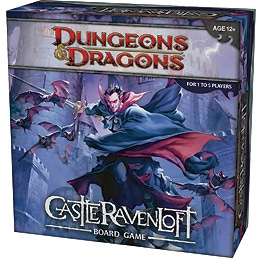
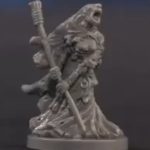
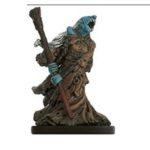
I’m really interested in CR, but there’s something about it that somewhat worries me.
The bit in the intro describing Castle Ravenloft from the rules:
“The master of Castle Ravenloft is having guests for dinner — and you are invited!
“The castle rises over the dark forests of the land of Barovia, looking down upon a sad, frightened village surrounded by an endless sea of dense fog and mist. The master of the castle, Count Strahd, is a vampire, and the night and its creatures belong to him. As long as Strahd exists, Barovia and the land around it will never be safe.
“A group of Heroes has recently arrived in Barovia, stepping out of the mists to find themselves caught up in the evil emanating from Castle Ravenloft. These Heroes have chosen to enter the castle and discover the secrets waiting within. The dangers are great, the monsters are deadly, and only the bravest and most capable Heroes stand a chance of surviving — let alone succeeding — in defeating Strahd and his minions.
“The entrance to the castle looms ahead. Strahd’s plans are nearing fruition, and the master of the castle has an undying thirst for blood. Can you defeat Count Strahd and the Monsters that inhabit Castle Ravenloft?”
…doesn’t then – to me, anyway – thematically match up with the “where” of the locale of the game being played:
“You use the Dungeon Tiles (referred to as the Dungeon Tile stack) to build the crypts beneath Castle Ravenloft. Each time you play, the crypts have a different layout. The labyrinthine passages beneath the castle are said to be endless. Others believe that Strahd’s magic causes the crypts to shift and move around each time mortals dare to enter them.”
Now, the rules don’t really specify what the given adventures are in terms of their feel, but I’m not getting a real “castle exploration” vibe from the game. I don’t think I would be nearly as bothered about this if the game had been titled ‘The Crypts of Castle Ravenloft’ or ‘Beneath Castle Ravenloft,’ but not actually getting to go through the Castle itself is somewhat of a letdown. Probably not enough where I won’t pick it up because it looks to be a well made game (and if nothing else will combine with Wrath of Ashardalon), but given that there’s a Ravenloft RPG forthcoming which will allow for vampire, werewolf and other PCs, it does seem like a thematic misstep.
Steve,
While being able to explore the entire castle would be fun beyond imagine, I don’t see how it would be feasible. You would have to have specific tile layouts for rooms, hallways, etc. And that is exactly what WOTC was trying to avoid in this game. You flip over the tiles randomly, which, IMHO, really only leads to basic terrains (dungeons, caverns, forests, etc). That said, the tiles are basic enough that you could have scenarios in the actual castle (and maybe there are, I did not read all the scenarios). But, I wouldn’t expect more than dungeons here.
Stuart
Pingback:Castle Ravenloft Goodies « WeeBeeGamers.com
Pingback:Wizards of the Coast Gen Con Interview – Part 2 of 2 (D&D / Gamma World / Fortune Cards) | LivingDice.com
I want this boardgame but impossible to order it yet as import in Europe… (direct sales from usa are costing a arm 80 90€ !)
No news about a french version ?
Pingback:Castle Ravenloft e Wrath of Ashardalon: quando il dungeon crawl diventa cooperativo! « Il Giocatore